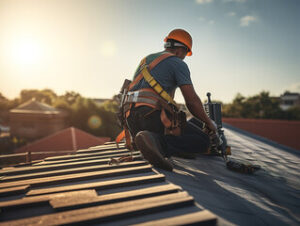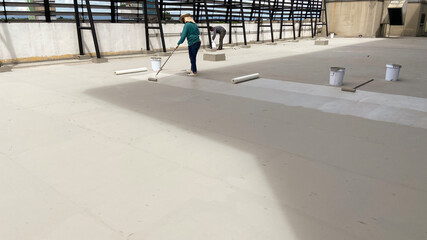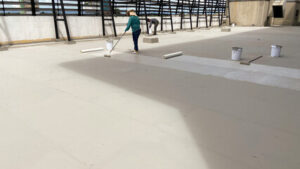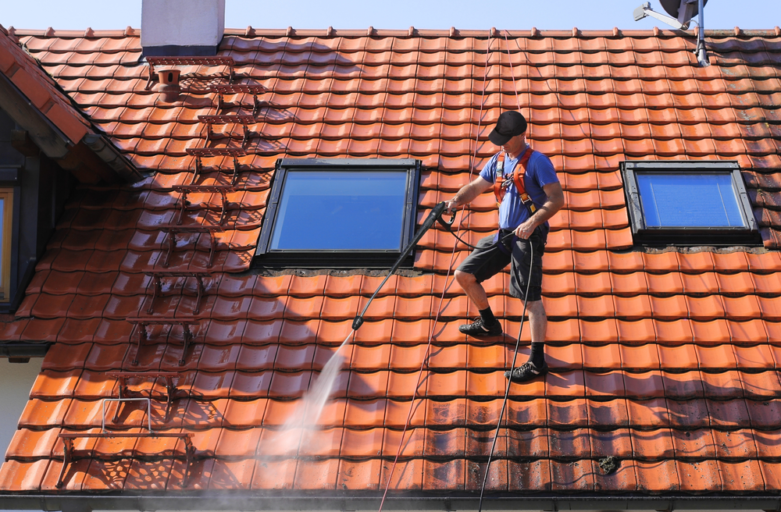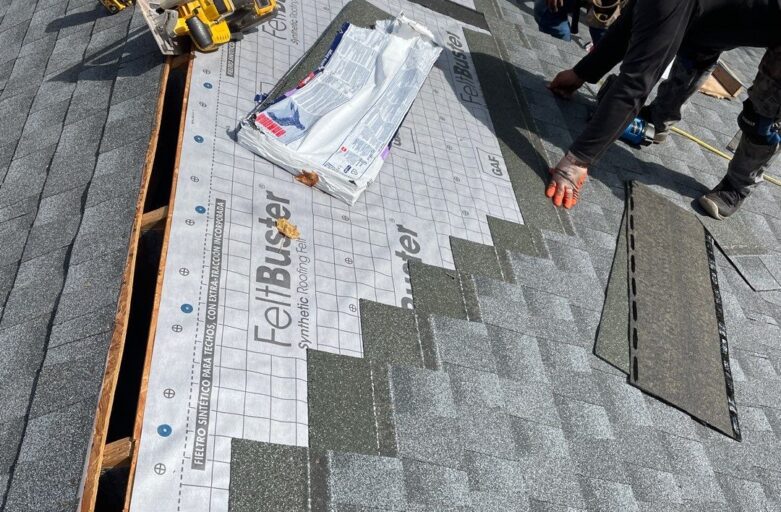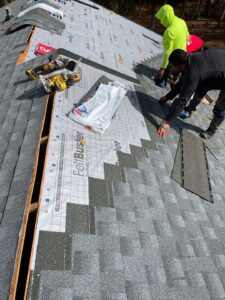Clay tile roofing is a popular choice for homes with Spanish or Mediterranean architecture. But before you commit to this enduring roofing material, consult a local and professional roofing contractor in your area.
They should be able to tell you if your home’s structure can support it and advise on the best roof shape and style. Clay tiles are among the heaviest roofing options, so consider your budget. Visit https://www.fresnoroofingexperts.com/ to learn more.

Clay roof tiles can withstand some of the most challenging weather conditions. The roofing material is resistant to high winds, rain, and heat. This means they can keep warm air out during summer and cool air in winter. As long as you maintain the roof with regular inspections and maintenance, the tile will last for a lifetime.
These roofs can also resist fire. The roofing material is impervious to rust and decay. It is also resistant to insects, and it doesn’t swell or shrink with moisture. The tiles are easy to clean and don’t need to be sealed or treated with chemicals.
Unlike shingles, clay tiles don’t lose their color over time. They can also resist damage from the sun’s ultraviolet rays. As a result, they are much more durable than other roofing materials. They are an excellent choice for homes in where hot temperatures and heavy winds are common.
Aside from durability, clay tiles are also water-resistant. This means that they can withstand strong rainstorms and snowfall without leaking. They are also easy to install. They don’t require any metal supports and are relatively lightweight. These factors make them a good option for homeowners who are considering a sustainable lifestyle.
In addition to its durability, a clay tile roof is also an excellent choice for reducing the temperature of your home. Clay roofs limit the transfer of heat in and out, which helps to maintain a comfortable indoor temperature. They can also help to lower energy bills by insulating the building.
One of the biggest advantages of clay tiles is their longevity. When installed correctly, a clay roof can last for up to 100 years. This is an advantage over other roofing materials such as asphalt shingles, which have a lifespan of around 30 to 40 years.
The durability of clay tiles can reduce the number of times that you need to call a roof repair service. However, it is still important to have your roof inspected regularly for any damage or leaks. If a problem is identified, it should be repaired as soon as possible to avoid more serious problems.
Clay tile roofs have a classic aesthetic that makes them a great choice for homeowners seeking to distinguish their homes from the sea of asphalt shingles and metal roofing options that currently dominate the market. In addition to their beauty, clay tile roofs are also energy efficient and have a natural resistance against fire.
These attributes make them a desirable option for homeowners in While they may cost more upfront than other roofing materials, a clay tile roof can provide long-term savings. It is important to consult a professional about the pros and cons of installing this type of roofing to ensure that it will serve your home well.
Unlike other roofing materials, clay tiles offer a multitude of design and style options that allow you to match them to your home’s overall aesthetic. They can be glazed or unglazed and come in many different colors, from earth tones that complement Southwestern and Mediterranean architectural styles to bright shades that look more modern.
Clay tile can be designed in a variety of shapes, including flat, curved, interlocking, and wavy. The wavy style is particularly popular in the where it can add a unique texture and a traditional flair to modern homes. Flat clay tile roofs are ideal for regions that experience heavy rainfall and snowfall, as the interlocking system can effectively prevent water damage.
A clay tile roof can be installed on a slope of up to 19:12, although it is important to use proper underlayment and fastening methods. A steep slope can cause the tiles to rattle and break under pressure, especially in windy conditions.
Because they are installed individually, clay tiles can promote air circulation in your home, which can help to keep it cool and comfortable during hot weather. This characteristic, coupled with their thermal properties, can reduce your energy costs by reducing the amount of work required by your air conditioning system. Additionally, the neutral earth tones of Mediterranean clay tiles can be a great complement to any exterior color scheme. However, it is important to note that a tile roof must be properly maintained in order to maximize its energy efficiency and aesthetic appeal. Regular inspections and cleaning can be necessary to remove debris, dirt, and moss and to apply a moss-killing solution as needed.
If you want to reduce your energy bills and protect the environment, clay roof tiles are a good option for your home. These thick and heavy roofing materials have excellent thermal emittance that helps regulate your house’s temperature. They can also withstand large amounts of rain without losing their strength and structure.
A clay tile roof requires less maintenance and lasts longer than other roofing materials such as asphalt shingles or metal. However, a clay tile roof needs to be regularly inspected and maintained by an experienced roofing professional to prevent the buildup of moss, mildew, or algae.
Clay roofs are made by hand or through a machine process and are then baked in high-temperature kilns to make them weatherproof and durable. They can also be customized with a variety of colors and textures to enhance the aesthetics of your house. They can even be shaped to mimic wood shakes or other roofing types, making them a versatile choice for many homes.
These roofs are also very sustainable and offer a low carbon footprint from production to installation. They are made of natural resources and don’t produce harmful gases during manufacturing. In addition, when they are dismantled, the clay materials can be recycled to manufacture new roofs.
Although clay tiles are an eco-friendly option, they can be expensive compared to other roof materials. Nonetheless, their long lifespan and excellent return on investment help offset these costs. They also add value to your home, which makes them a worthwhile investment.
When choosing a roof material, it’s important to consider the climate of your area and your style preferences. A professional roofer can recommend the best option for your home. They can also help you determine whether your home’s roof slope and support can handle the weight of a clay roof. In addition, they can ensure that your home’s foundation and framing are strong enough to support a clay roof. If they aren’t, your roof will not be able to stand up to the weight of a clay roof and could suffer serious damage.
While clay tiles are highly durable, they do need regular maintenance to keep them in top shape. Clay tile roofs must be inspected twice a year and cleaned regularly to avoid the development of mold, mildew, dirt and other debris that can damage them. A professional roofing company can use a soft, low-pressure wash with biodegradable chemicals to remove stubborn buildup without damaging tiles or the underlying materials. Regular cleaning prevents moss and algae from growing on the roof, and it helps to prolong the life of the clay tiles.
In addition to cleaning the roof, a professional roofing contractor can also trim overhanging tree branches that can provide shade and retain moisture on the roof surface. They can also install zinc or copper strips along the ridge line that release natural elements that inhibit the growth of moss and algae. They can also clean gutters and downspouts to ensure that water drains away from the roof quickly.
A clay tile roof can last more than half a century with the proper care and inspections. A skilled roofing contractor will inspect the clay tiles for cracks, chips, bruising and other distortions that can happen from weathering. They can replace any cracked or broken tiles before the cracking spreads and allows water to seep under the roof and cause damage to other parts of the home.
The heavy weight of a clay tile roof means that the roof structure may need to be reinforced before the tiles are placed on it. An expert roofing contractor will verify that the roof can support this extra weight, and if not, they can add upgrades to preserve it.
A clay tile roof can withstand the battering of snow, hail, wind and rain. But the harsher weather can do some damage to the tiles, and it is important to keep an eye out for warning signs like slow leaks, mold growth and bubbling underlayment. Any of these signs indicate that it is time to call a roofing expert and schedule a roof repair or replacement. Waiting can lead to irreparable damage and the need for a complete roof replacement.




